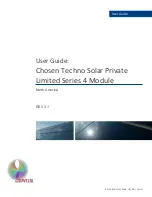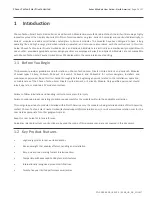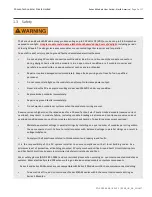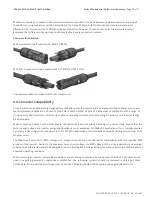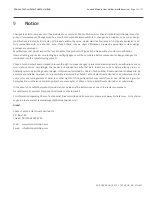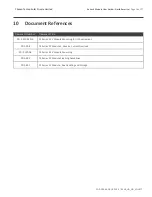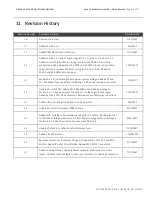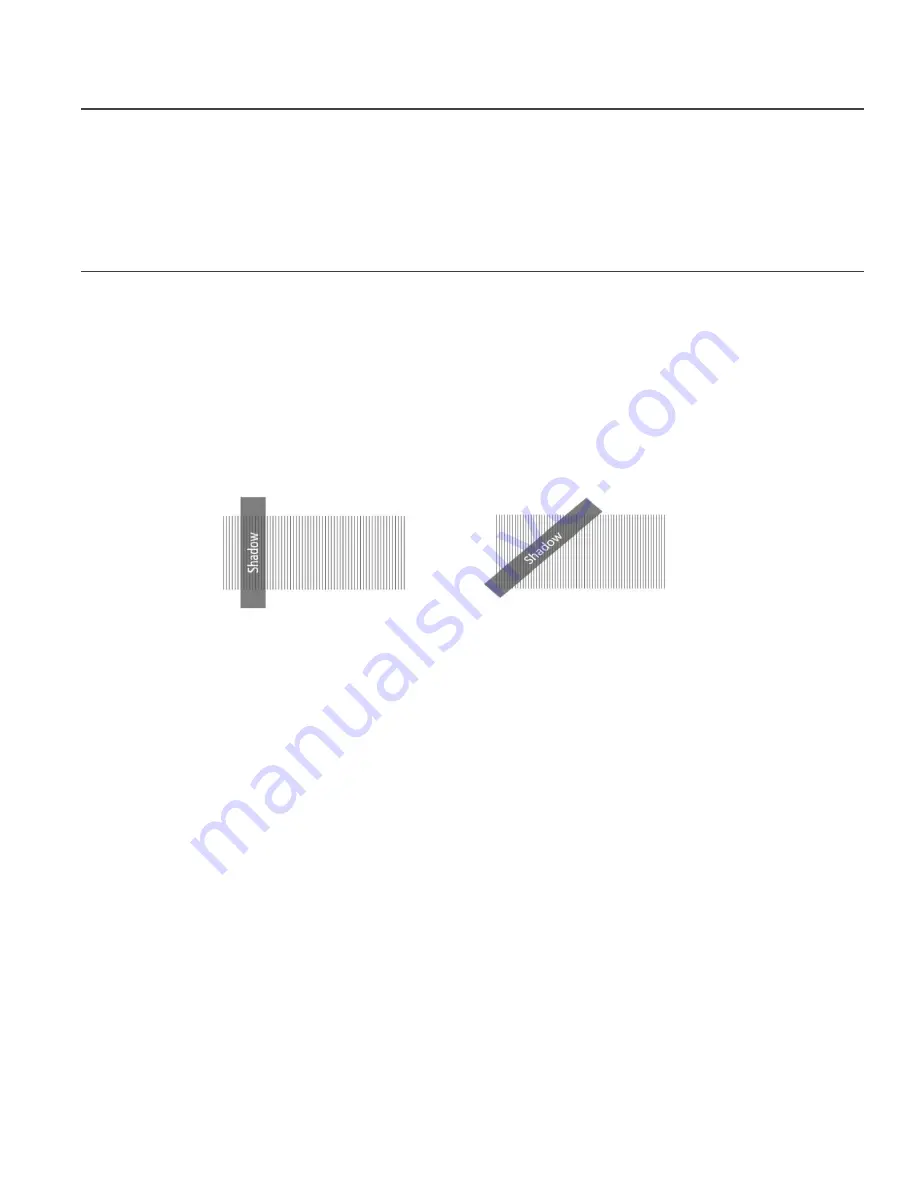
Series 4 Module User Guide—North America
| Page 8 of 17
4.2
Module Orientation
PV performance modeling software should be used to determine the optimum orientation and tilt angle for each location.
For tilted free-field applications or single-axis tracker applications where there is row to row shading, modules shall be
installed in landscape orientation.
4.3
Module Shading Considerations
To maximize performance, modules should be located in an area that receives direct sunlight from mid-morning to mid-
afternoon (typically 9:00 a.m. to 3:00 p.m.). Installation must avoid locating the modules where shadows may be caused by
buildings, trees, etc.
Specific shading patterns can cause damage to module cells due to the creation of localized areas of reverse bias. Reverse bias
is generated by one or more series-connected cells being shaded while the rest of the cells are fully illuminated. When shading
geometry is suitable for damage to occur, it can happen in very short durations (seconds to minutes) and under a wide range
of irradiance (as low as 160 W/m
2
). An example of prohibited shading orientation is presented below.
There is no risk of module damage due to “row-to-row” shading in landscape orientation. There is also no risk if shading
occurs while modules are in open circuit conditions or no risk from diffuse shading for objects greater than 2 meters or 7
feet.
There is a low risk of module damage due to shading from walking or standing in front of operating modules or from parking or
driving vehicles in front of operating modules during illuminated times. Best practice is to stay close to the back side of the
adjacent rack as one travels down a row of operating modules.
Instances of shading that will lead to a voided warranty include the High Risk items listed below.
High Risk (Prohibited) Shading
1.
Resting or adhering slender objects (tools, brooms, clothing, wires, tape) on sunny side of operating modules, or when
nearer than ~5-7 feet above operating modules, especially when shadow oriented parallel to cells.
2.
Fixed objects within ~5-7 feet above operating modules that cast a shadow over the long dimension of the cells. Close
objects like posts, ropes, signs, fences, or equipment can begin to increase risk of partial shading of full cells when nearer
than ~5-7 feet from the sunny-side of operating module.
3.
A support frame or mounting method on the short edge(s) of modules that fully shades the entire length of a cell (either
partially or completely).
4.
Working continuously with outstretched arms or tools over operating modules.
5.
Cleaning apparatus, including cleaning robots and other mechanisms that traverse the module repeatedly while the
system is operating (unless evaluated and approved by First Solar).
PD-5-200-04 NA | REV 3.1 | 0348_UG_NA_11JUL17
Chosen Techno Solar Private Limited

